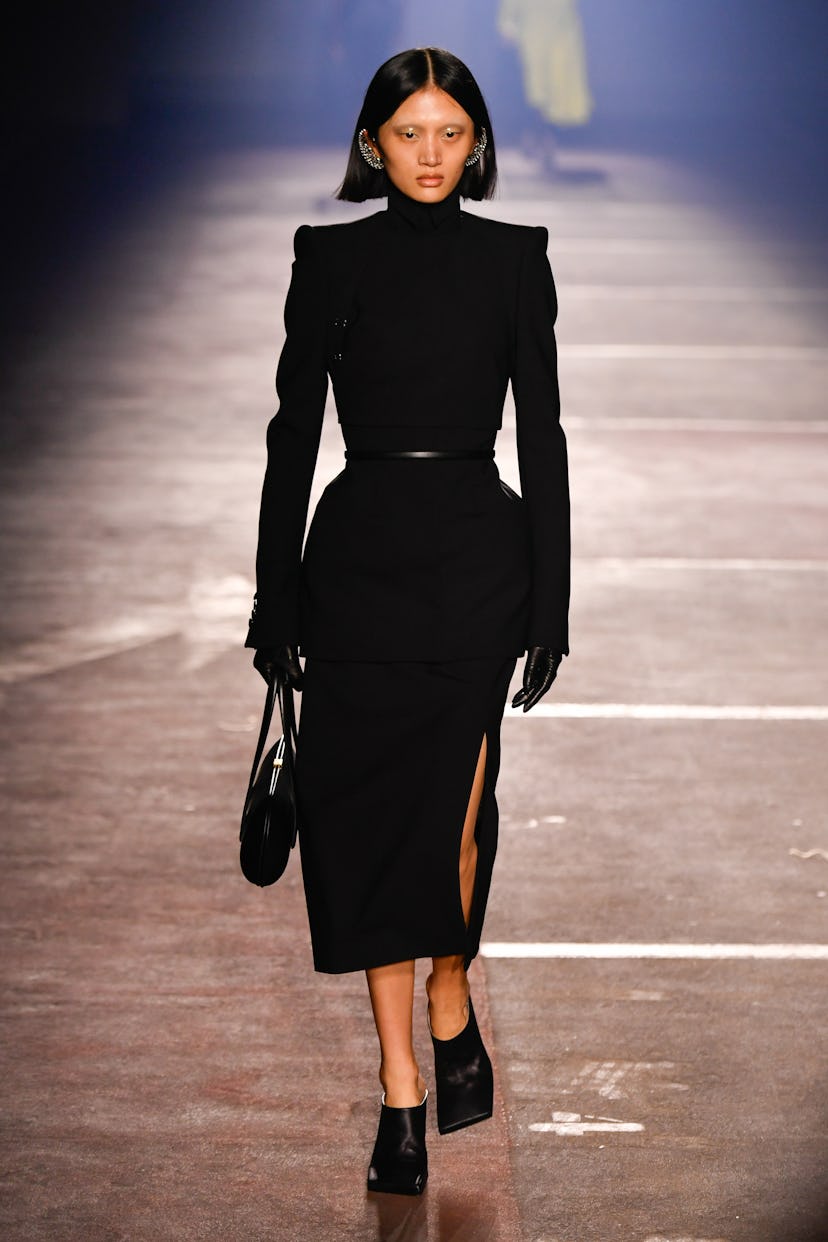Mugler Brings Out Archival Hits & High Drama for Its New Designer Debut

Miguel Castro Freitas opened his first collection for Mugler with a procession of looks that referenced the brand’s historic knack for directional tailoring and love of dramatic materials. Titled “Stardust Aphrodite,” the collection—which featured feathers, fringe, and sculpted leather—had a little bit of something for everyone, plus a whole lot of focus on camp, whether intentional or not. (Nipples peeking out of a black fringed dress, anyone?)
For those unfamiliar with his name, Freitas was a Central Saint Martins graduate who, in 2004, got handpicked by John Galliano to work at Dior. He also spent time at Yves Saint Laurent during the Stefano Pilati era and at Lanvin alongside Alber Elbaz. Freitas has held titles as head of tailoring at Christian Dior under Raf Simons, and head of womenswear at Dries Van Noten. Most recently, he cemented his place in the industry as creative director of Sportmax prior to joining Mugler.
His vision for high drama came through best via structured, bird-like feathered tops in shades of crisp white, which then faded to tangerine and lemon. Instead of committing fully to the theatrics of the Mugler archives, Freitas paired these feathered fantasies with low-key casual separates, making modern the far-flung aesthetics that once famously belonged to house founder Manfred Thierry Mugler. Backstage, Freitas referenced bringing back glamour and craftsmanship to the brand. The color palette of the new Mugler came mostly in neutrals like beige, black, and camel, save for one or two looks rendered in punchy chartreuse or seafoam green.
The garments fell into one of three camps: oversize and bulky, with big fluffy fabrics or shoulder pads; severely tailored with extreme hourglass figures; or lightweight, sheer dresses. (Freitas called the collection “a trilogy of glorified clichés.”) A few of the models carried sculptural bags in a mishmash of proportions. One gown in particular was covered in silver stars—its straps hung from bare-breasted nipple piercings. Matte bejeweled tops were styled over see-through shirts that also freed the nipple. Many of the translucent gowns were gossamer-fine and showed everything.
Highlights of the collection included extreme-shaped blazers that referenced the tiny, nipped-in waists of Mr. Pearl’s corsets (which were reportedly on Freitas’s mood board). It’s exactly the rare kind of surprise and drama that feels so foreign to contemporary fashion right now.